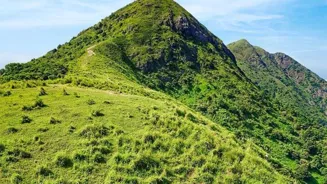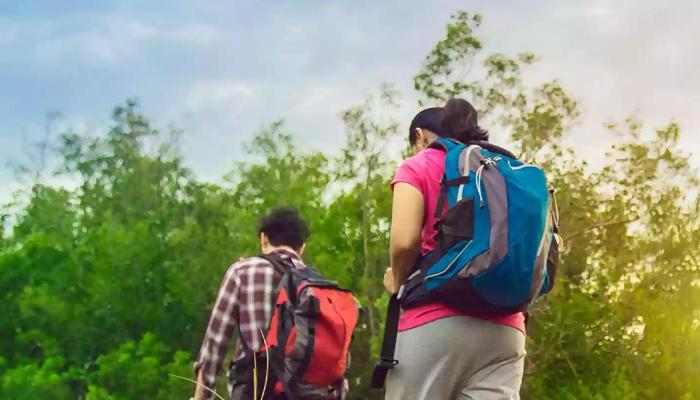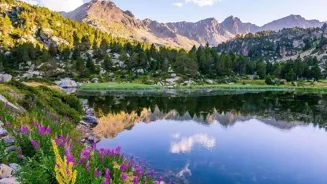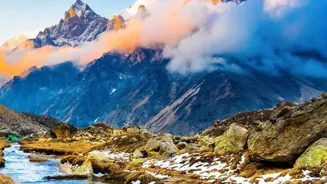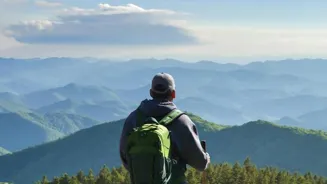Discover 8 travel photography techniques to capture unforgettable memories. Elevate your skills and turn your photos into masterpieces!
Namaste, fellow wanderers and photography enthusiasts! Planning a trip
around India, or maybe even abroad? Want to capture those precious moments in a way that truly does them justice? Well, you've come to the right place!
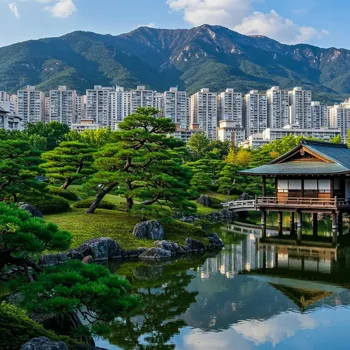
In this article, we'll explore eight simple yet effective techniques to elevate your travel photography and turn your vacation snaps into stunning memories you'll cherish forever. Forget just pointing and shooting; we're going to delve into the art of storytelling through your lens.
So, charge your batteries, grab your camera (or even your phone!), and let's get started on this photographic journey! We'll cover everything from understanding light to composing a compelling shot and adding your personal touch.
Gear up to transform your travel album into a visual masterpiece brimming with the rich tapestry of your adventures.
Capture the magical 'golden hour' for stunning photos
First things first, let's talk about the 'golden hour'. You know that magical time just after sunrise and just before sunset? Photographers call it the golden hour because the light is unbelievably soft, warm, and flattering.
Imagine the Taj Mahal bathed in the soft glow of the setting sun, or the vibrant colors of a Rajasthani market illuminated by the gentle morning light. During these times, harsh shadows disappear, and colors become richer and more vibrant.
This is the prime time to capture landscapes, portraits, and street scenes that will truly stand out. So, set your alarm, plan your shots ahead of time, and make the most of this golden opportunity!
Even a simple scene can look extraordinary when bathed in the soft, warm light of the golden hour, Remember, patience is key. Sometimes you might have to wait a while for the perfect moment, but the results will be well worth it.
Experiment with different angles and compositions to find what works best for the subject.
Use reflector for golden hour portrait lighting
Consider using a reflector (even a white sheet of paper will do) to bounce light onto your subject's face during the golden hour for even more flattering portraiture.
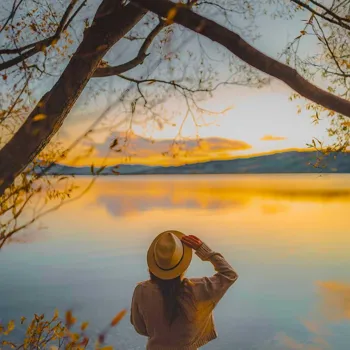
Master composition in photography: rule of thirds, leading lines, angles, light
Next, dive into the power of composition. It’s not just about pointing and shooting; it's about arranging the elements in your frame to create a visually appealing and balanced image. One of the most basic yet effective rules is the 'rule of thirds'.
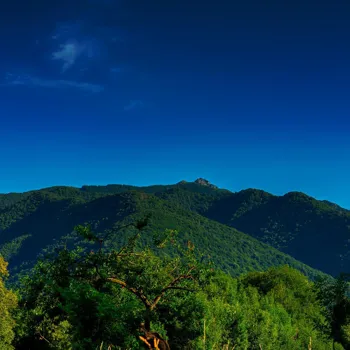
Imagine dividing your frame into nine equal parts with two horizontal and two vertical lines. Place your main subject along these lines or at their intersections. This creates a more dynamic and engaging composition than simply centering your subject. Also, pay attention to leading lines.
These are lines that draw the viewer's eye into the image, creating a sense of depth and perspective. For example, a winding road, a row of trees, or even a river can act as a leading line. Don't be afraid to experiment with different angles and perspectives.
Get down low, climb up high, or shoot from a unique angle to capture a fresh and interesting perspective. Remember that composition works in harmony with light and colour.
Capture the essence of a place through storytelling in travel photography
Another critical consideration is to capture the authentic essence of a place by focusing on storytelling. Travel photography isn't just about pretty pictures; it's about capturing the soul of a place and sharing its stories with the world. Focus on capturing candid moments of everyday life.
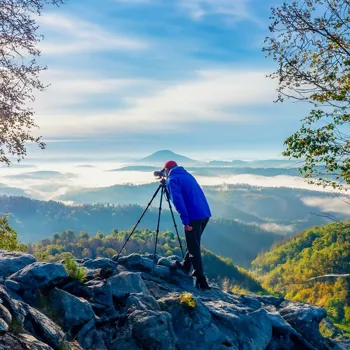
Observe the local people, their customs, and their daily routines. Look for opportunities to capture genuine emotions and interactions. Visit local markets, festivals, and cultural events to witness the vibrant colors and traditions of the region.
Don't just photograph the famous landmarks; explore the backstreets and hidden corners to discover the true character of a place. Consider including people in your landscape shots to give a sense of scale and context.
A lone figure walking along a beach, for example, can add a sense of mystery and intrigue to the scene. Remember to be respectful of the local culture and customs. Ask for permission before photographing people, and be mindful of their traditions and beliefs.
Add personal touch to photography, find unique style, experiment, have fun
Now, let's talk about adding a personal touch. What makes your perspective unique? What stories do you want to tell through your images? Don't just copy the photos you see online. Try to find your own style and vision.
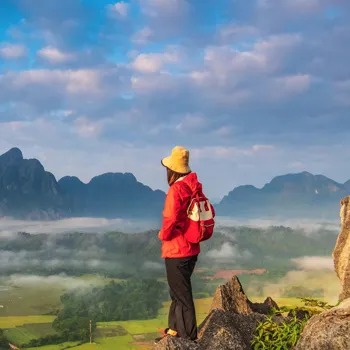
Experiment with different techniques, explore different themes, and capture the things that resonate with you personally. Focus on capturing the details that make a place unique. This could be anything from the intricate carvings on a temple to the vibrant colors of a spice market.
These small details can add depth and richness to your images and help to tell a more complete story. Don't be afraid to break the rules. Photography is an art form, and there are no hard and fast rules. Experiment with different techniques, try new things, and find what works best for you.
The most important thing is to have fun and express yourself through your images. Let your photos reflect your personal experiences and feelings about the place you're visiting.
Black and white photos reveal beauty and emotion, ideal for storytelling
Don't underestimate the power of black and white photography. While colors are often appealing, sometimes stripping away the color can reveal the underlying beauty and emotion of a scene.
Black and white photography can be particularly effective for capturing portraits, street scenes, and landscapes with strong textures and contrasts. It can also be used to create a more timeless and classic feel.
Experiment with different editing techniques to enhance the contrast and tones in your black and white photos. Pay attention to the light and shadows, and use them to create a sense of depth and drama.
Black and white photography can be a powerful tool for storytelling, allowing you to focus on the essential elements of a scene without the distraction of color. Think about the stories each photograph tells.
Experiment with different lightings for dramatic photo effects
Also, consider shooting in different lightings. You can try experimenting with various types of artificial lighting to create different looks for your photographs. This technique can be used with strobes and speedlights, but it can also be used with constant light sources such as LED panels.
Different types of lighting will effect the colours and shadows in different ways, and can create a dramatic effect in the shot. Another important point to note is that no matter the subject, it can be difficult to take a good picture if there isnt much light available.
You can try various ways to improve the lighting but if it's too dark, you may not be able to take a picture at all. So try planning in advance and visit your desired attraction at specific, brighter times. Be sure to carry other equipment to improve the lighting in the shot.


